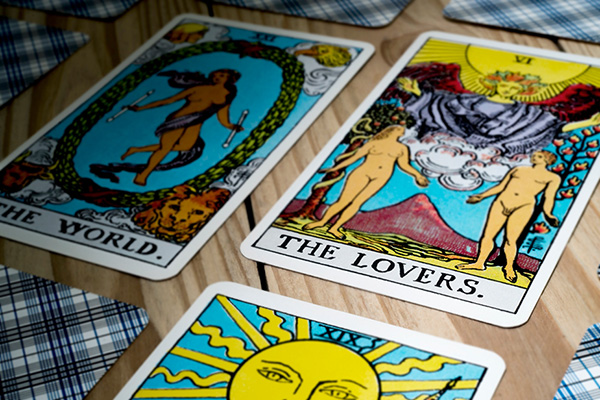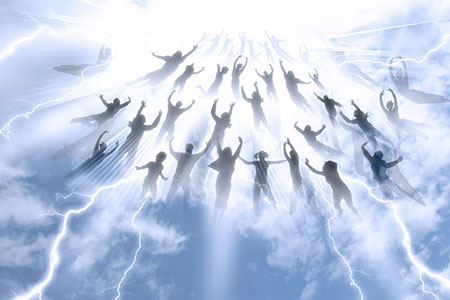jewish
Ready For Your Spring Spiritual Renewal?
 Today marks the Spring Equinox and the first day of spring in the Northern Hemisphere. Known also as the Vernal Equinox, it is an astronomical event that marks one of the two times of the year when day and night are nearly equal in length. It usually occurs around March 20th or 21st in the Northern Hemisphere.
Today marks the Spring Equinox and the first day of spring in the Northern Hemisphere. Known also as the Vernal Equinox, it is an astronomical event that marks one of the two times of the year when day and night are nearly equal in length. It usually occurs around March 20th or 21st in the Northern Hemisphere.
During the equinox, the sun crosses the celestial equator and moves north. Many cultures and traditions celebrate it as a time of balance, renewal, and growth. As nature shifts into balance, we are invited to do the same — to clear away what no longer serves us and move into a season of light, action, and new beginnings.
Spring is a new beginning. A new sun rising. The dawn in the wheel of the year. At this time of year our minds are bright and alive with new ideas. Many of us feel inspired and excited to try new things. Life awakens in the warm sunlight and our spirits feel ready for a new beginning.
One of the longstanding customs associated with this time of year is the tradition of “spring cleaning.” Across cultures and generations, people have used this time of year to refresh their homes, clear out accumulated clutter, and invite new energy into their lives.
But spring cleaning is more than just cleaning up our physical space — it is a sacred ritual of renewal, release, and transformation. As the earth awakens from hibernation, we too are called to clear out the old and make room for new energy. From a spiritual perspective, this process is an opportunity to realign ourselves with higher frequencies, release stagnant energy, and invite clarity into our lives.
The Spiritual Implications Of The Lazarus Syndrome
 Recently, while watching the 2008 film The Lazarus Project, I was reminded of the paranormal phenomenon of near-death experiences (NDEs) and became intrigued by the possibility of someone coming back to life after death.
Recently, while watching the 2008 film The Lazarus Project, I was reminded of the paranormal phenomenon of near-death experiences (NDEs) and became intrigued by the possibility of someone coming back to life after death.
The plot of the movie is about a man who is given a second chance at life after being executed for a crime. Despite being lethally injected, he somehow wakes up in a psychiatric hospital and must overcome a series of mysterious and mystical challenges to be reunited with his family.
The title, of course, refers to the story in John 11 of a man named Lazarus who was raised from the dead by Jesus after four days. While the plot of the movie does not directly parallel the biblical story, it does draw on the themes of resurrection and second chances.
My newfound curiosity soon led me to discover a documented medical phenomenon known as “Lazarus Syndrome.” Also known as the “Lazarus phenomenon” or “autoresuscitation,” it is a rare medical condition in which a person spontaneously comes back to life after all attempts at resuscitation have failed and the person has been pronounced dead.
The phenomenon was first noted in medical literature in 1982 by Finnish anesthesiologist Dr. Kalevi Linko, who described it as the spontaneous return of circulation after resuscitation efforts have ceased. The term “Lazarus phenomenon” was later popularized by Dr. John Francis Bray in 1993, who used the biblical reference to describe these rare cases of patients who spontaneously return to life.
The Mystical Tale Of The Lovers Card
 I have made an illuminating discovery regarding the Lovers card in the Tarot. In all the years I have been practicing cartomancy, I never realized certain aspects of this card’s mytsical symbolism and its portrayal of the healing power of divine love.
I have made an illuminating discovery regarding the Lovers card in the Tarot. In all the years I have been practicing cartomancy, I never realized certain aspects of this card’s mytsical symbolism and its portrayal of the healing power of divine love.
In the classic Rider-Waite rendition, it is commonly accepted the card merely depicts an archetypal Adam and Eve in the Garden of Eden, with a scheming serpent lurking behind Eve and the majestic figure of an angel looming overhead. Recently, I learned from a psychic colleague’s podcast that the angelic figure portrayed in the in card in fact represents the Archangel Raphael. I’ve always been fascinated by Raphael, the angelic healer of minds, bodies and souls.
Raphael is first mentioned the ancient Hebrew apocalyptic book of Enoch, as well as the deuterocanonical book of Tobit. Also known as the apocrypha, the deuterocanonical books are not traditionally included in Protestant and Jewish canonical texts, but it is recognized in the Roman Catholic and Orthodox traditions.
The book of Tobit relays the story of a blind man named Tobit and his son Tobias, whom he sends to retrieve an investment of silver he had deposited in a town in Media in north-western Iran. With the protection and guidance of the angel Raphael, Tobias arrives along his journey in Ecbatana, the capitol of Media, where he meets a young woman named Sarah.
Sarah is in utter despair and praying for death, as she has already lost seven husbands. Each of her lovers had been murdered on their wedding night by the demon Asmodeus, who is obsessively in love with her. Angel Raphael encourages Tobias to marry Sarah and then helps him to defeat the homicidal demon.
The Origins And Journey Of The Soul
 Where do souls come from? Souls are created in a place I know as the Guf, or the ‘Tree of Souls.’ In Jewish mysticism this Tree of Life is located in the Garden of Eden. When this tree blossoms, it produces new souls.
Where do souls come from? Souls are created in a place I know as the Guf, or the ‘Tree of Souls.’ In Jewish mysticism this Tree of Life is located in the Garden of Eden. When this tree blossoms, it produces new souls.
This ‘Treasury of Souls’ is said to be located in the Seventh Heaven. I have seen this place in a dream vision. I could go up to the gold and emerald gates, but could not enter. It is my understanding that all souls are created here by God.
Souls in the Guf are in different stages of evolution. There are young souls and old souls – a diversity of spirit energies waiting to incarnate, reincarnate and ascend.
I can usually distinguish the young, new souls from the wiser and more experienced, because they tend to be a bit ‘wild’ and unrestrained. Young souls are typically eager to experience as many things as possible, and sometimes rush in ‘where angels fear to tread.’ If they are exceptionally gifted, they also need to be guided properly. Many old souls reincarnate to the earth plane to help ground and guide these younger souls.
The old souls also return to provide the physical world with the many things needed for us to thrive, such as advancements in the arts, sciences and technology. Sadly, some greedy, spiritually unconscious humans abuse these gifts to the world for their personal gain. This causes much unnecessary suffering in the world.
When we decide in this life that we would like to have a child, it means our soul wants chooses to take on another soul contract. However, such a soul agreement, like any other contract, is always a two-way process. There cannot be a pregnancy unless the soul of the unborn child also chooses you as parent. In the Guf, souls can decide if they want to join a contract, or not.
The Laying On Of Hands
 The laying on of hands, also known as the imposition of hands, is a ritual act performed in some religious and spiritual traditions. It is used for the purpose of ordination, healing, or the transmission of a spiritual gift or blessing. In this blog article I will explore the different traditions and how they use this ancient practice in diverse ways, with a special focus on healing.
The laying on of hands, also known as the imposition of hands, is a ritual act performed in some religious and spiritual traditions. It is used for the purpose of ordination, healing, or the transmission of a spiritual gift or blessing. In this blog article I will explore the different traditions and how they use this ancient practice in diverse ways, with a special focus on healing.
Judaism
The hands are of particular importance in certain Jewish religious rituals. Deuteronomy 34:9 describes, for example, how Moses laid hands on Joshua, his successor. The term used for it is semicha, meaning ‘leaning of the hands.’
It is also associated with sacrifice. Thousands of years ago, priests practiced semicha by laying hands on the sacrifices right before offering was made. Moses tells Aaron, “This is the thing that God commanded you to do, that God’s presence may appear.” It is understood that this passage in Leviticus 9 refers to the laying on of hands.
Christianity
In the New Testament we find a continuation of the Jewish practice of semicha, still connected to the liturgies of ordination and now also of baptism, in both of which the imposition of hands is an important part of the ritual.
Ordination involves conveying a gift and an authority within the Church. The imposition of hands connected with baptism is a means whereby the convert is born to the ecclesia, or the Christian community. The action itself of laying on hands is connected with the gift of the Holy Spirit and is also used to convey a blessing. For example, in Acts 6:6: “These they set before the apostles, and they prayed and laid their hands on them.” It is also practiced as a means of healing (Luke 4:40).